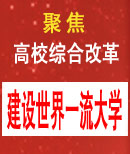自我剽窃(Self-plagiarism)[1],又名“再循环欺骗”(recycling fraud)[2],是指重复使用作者自己作品中重要的、相同的或近乎相同的部分内容而没有告知这样做或没有引用原文献。这类文章通常被认为是复制品(duplicate)或重复发表(multiple publication)。就学术伦理而言,如果被复制的先前作品的版权已经转让给其他出版机构,这样做是违法的。通常,自我剽窃只被视作严重的学术道德问题,因为这些复制的作品也常被作者宣称为新的“成果”,如学术出版领域的论文成果和教学方面的成果[1,2]。但这种情况除法律意义以外,不适用于公共兴趣的文本,如通常发表在报纸或通俗杂志上的关于社会、行业和文化方面的见解。还有,如学术成果发表在专业学术期刊之后再改写为新闻稿发表在报纸等大众媒体也不算作自我剽窃。有了这种认知的背景,就不难理解为什么经常发现某人的一篇文章重复发表在多家报章杂志或被转载若干次,也没有人谴责其重复发表或一稿多发了。
在学术领域,自我剽窃,是指作者在后续出版物中重复使用他们自己已经发表的或已有版权的作品,但又没有引用前面的出版物[3]。判定自我剽窃往往很难,因为有限的重复使用材料不论在法律上(如“合理使用[fair use]”)还是伦理上都是可接受的。有人辩称,自我剽窃术语自相矛盾,站不住脚[4]。因为根据剽窃的定义,主要指使用他人的作品,而不是自己的。Stephanie J. Bird[5]就认为,“自我剽窃”术语是一个使用不当的名称。但是,该词语用于指潜在不道德发表的特定形式。Stephanie J. Bird将“两次或多次冗余发表”("dual orredundant publication")这种道德问题判定为“自我抄袭”。在教育领域,自我剽窃还用于指学生提交同一篇文章去骗取两门或以上课程的学分。
David B. Resnik认为,自我剽窃只涉及学术不诚实,但不涉及知识盗窃[6]。
Roig提出一种有用的分类系统,认为自我剽窃主要包括4种类型[7]:在不同的期刊重复发表同一篇文章;把同一个研究分割为多篇文章发表,通常称为“切香肠”;文本再循环利用;版权侵犯。
[参考文献]
[1] 维基百科. Plagiarism. http://en.wikipedia.org/wiki/Plagiarism
[2] http://faculty.law.lsu.edu/stuartgreen/pdf/j-green2.pdf Stuart Green
[3] Hexham, I. (2005). "Academic Plagiarism Defined". http://www.ucalgary.ca/~hexham/study/plag.html.
[4] Broome, Marion E. (2004). "Self-plagiarism: oxymoron, fair use, or scientific misconduct?" Nursing Outlook, Vol. 52 (6),
November, pp.273-274.
[5] Self-plagiarism and Dual and Redundant Publications: What Is the Problem? http://www.springerlink.com/content/w4r30223m162h804/
[6] See Resnik, David B. (1998). The Ethics of Science: an introduction, London: Routledge. p.177, notes to chapter six, note 3.
Online via Google Books
[7] Roig, M. (2005). Re-using text from one’s own previously published papers: An exploratory study of potential self-plagiarism.
Psychological Reports, 97, 43-49.
关于Self-plagiarism的其他定义
1.Association for Computing Machinery (ACM) defines “self-plagiarism” as the verbatim or near-verbatim reuse of significant
portions of one's own copyrighted work without citing the original source.
(See Collberg and Kobourov, http://portal.acm.org/citation.cfm?doid=1053291.1053293)
美国计算机协会对自我剽窃的定义为:逐字逐句或近似逐字逐句的再利用自己已取得版权作品的部分重要内容而又没有引用原文献。
2.As Hexam (1999) points out, it is possible to steal from oneself as when one engages in embezzlement or insurance fraud. In
writing, self-plagiarism occurs when authors reuse their own previously written work or data in a ‘new’ written product without
letting the reader know that this material has appeared elsewhere. According to Hexam, “… the essence of self-plagiarism is
[that] the author attempts to deceive the reader”.
在写作中,自我剽窃发生在当作者在新的作品中重复利用他们以前的作品或数据,且没有告知作者这些材料已经发表在其他地方。根据Hexam的定义,
“自我剽窃的实质就是作者试图欺骗读者”。
3.“Typically, self-plagiarism refers to the reusing of old writing in new works. For example, an author reusing passages in a new
book or a scientist rehashing previously published research as if it were brand new. I’m not sure what the name for this type of
problem is, I’ve heard it referred to as “shotgun submissions” or “duplicate submissions” but not really self plagiarism.”
自我剽窃是指在新作品中重复再利用老作品。
4.The most common method of self-plagiarism is text reuse or text recycling, defined as the reuse of one's previously published
work that includes “almost identical methodology, literature reviews, discussions, and other similar or identical textual material
”.
Source: Roig M. Re-using text from one’s own previously published papers: an exploratory study of potential self-plagiarism.
Psychol Rep 2005;97:43–49.
自我剽窃最常用的方法是文本再利用或文本循环利用,被定义为重复利用以前已发表的作品,包括“几乎相同的方法、文献综述、讨论和其他类似或
相同的文本材料”。
5.Self-plagiarism involves copying from one's own work without proper attribution.
自我剽窃涉及复制自己的作品而没有正确注明出处。
6.Essentially, self-plagiarism is duplication, it's a kind of cheating.
本质上看,自我剽窃就是重复发表,是一种欺骗行为。
7.Self-plagiarism occurs when an author reuses portions of their previous writings in subsequent research papers.
自我剽窃发生在后续的研究论文中重复利用以前作品的部分内容。
8.Self-plagiarism is when an author reuses portions of his or her previous writings in subsequent research papers.
自我剽窃就是作者在后续文章中重复再利用其以前的作品中的部分内容。
其他文献:
Stepchyshyn, Vera; Robert S. Nelson (2007). Library plagiarism policies. Assoc of College & Resrch Libraries. p. 65. ISBN
0838984169.
Klein A. (June 8, 2007). "Opinion: Why Do They Do It?". The New York Sun. http://www.nysun.com/article/56158. Retrieved 2007-12-11.
Hart, M.; Friesner, Tim (December 15, 2004), research Plagiarism and Poor Academic Practice – A Threat to the Extension of e-
Learning in Higher Education?, Electronic Journal of E-Learning, http://www.ejel.org/volume-2/vol2-issue1/issue1-art25.htm
research, retrieved 2007-12-11
Kock, N. (1999). A case of academic plagiarism. Communications of the ACM, 42(7), 96-104.
Kock, N., & Davison, R. (2003). Dealing with plagiarism in the IS research community: A look at factors that drive plagiarism and
ways to address them. MIS Quarterly, 27(4), 511-532.
Clarke, R. (2006). Plagiarism by academics: More complex than it seems. Journal of the Association for Information Systems, 7(2),
91-121.
List of cases of plagiarism among journalists
Authorship gets lost on Web. http://www.usatoday.com/tech/news/2006-07-31-net-plagiarism_x.htm?POE=TECISVA
Online plagiarism strikes blog world. http://www.boston.com/business/articles/2006/05/08/online_plagiarism_strikes_blog_world/
http://news.com.com/8301-10784_3-5663303-7.html, http://www.webpronews.com/topnews/2005/08/30/copyscape-searches-for-scraped-
content
http://faculty.law.lsu.edu/stuartgreen/pdf/j-green2.pdf
Stuart Green See for example Dellavalle, Robert P., Banks, Marcus A. and Ellis, Jeffrey I. (2007). "Frequently asked questions
regarding self-plagiarism: How to avoid recycling fraud." Journal of the American Academy of Dermatology, Vol. 57 (3), September,
pp.527. doi:10.1016/j.physletb.2003.10.071
See Allow me to rephrase, and boost my tally of articles, by Rebecca Attwood, Times Higher Education Supplement, 3 July 2008
Hexham, I. (2005). "Academic Plagiarism Defined". http://www.ucalgary.ca/~hexham/study/plag.html.
Samuelson, P. (1994). "Self-Plagiarism or Fair Use?" Communications of the ACM, 37(August): 21-25.
Broome, Marion E. (2004). "Self-plagiarism: oxymoron, fair use, or scientific misconduct?" Nursing Outlook, Vol. 52 (6), November,
pp.273-274. [3]
http://www.springerlink.com/content/w4r30223m162h804/
Self-plagiarism and Dual and Redundant Publications: What Is the Problem?
See Resnik, David B. (1998). The Ethics of Science: an introduction, London: Routledge. p.177, notes to chapter six, note 3. Online
via Google Books
Scanlon, Patrick M. (2007). "Song from myself: an anatomy of self-plagiarism." Plagiary: cross-disciplinary studies in plagiarism,
fabrication and falsification, Vol. 2 (1), pp.1-11
[http://palgrave-journals.com/jibs/jibs_ethics_code.html JIBS Code of Ethics
"ACM Policy and Procedures on Plagiarism". October 2006. http://www.acm.org/publications/policies/plagiarism_policy.
American Political Science Association, [4] Section 21.1 American Society for Public Administration,
[www.aspanet.org/scriptcontent/index_codeofethics.cfm]
"Statement on Standards of Professional Conduct". American Historical Association. 2005-01-06.
http://www.historians.org/PUBS/Free/ProfessionalStandards.cfm. Retrieved 2009-04-16.


 京公网安备 11040202430174号
京公网安备 11040202430174号


